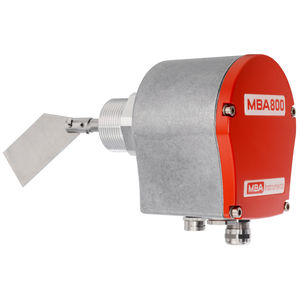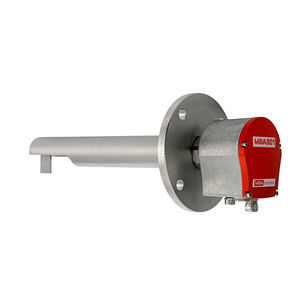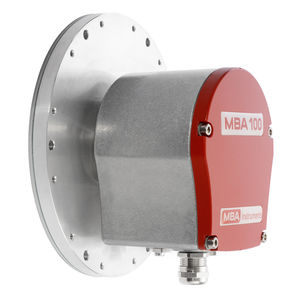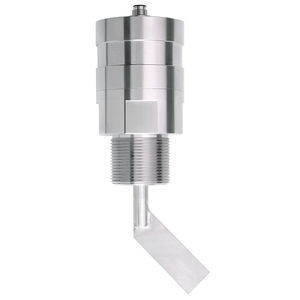
- Company
- Products
- Catalogs
- News & Trends
- Exhibitions
Vibrating level switch MBA700for bulk materialsfor tankfor chemicals




Add to favorites
Compare this product
Characteristics
- Technology
- vibrating
- Medium
- for bulk materials
- Applications
- for tank, for chemicals, for the food industry, for silos
- Approvals
- ATEX
- Material
- aluminum
- Mounting
- threaded, vertical
- Other characteristics
- IP65
- Process temperature
Max.: 150 °C
(302 °F)Min.: -40 °C
(-40 °F)- Process pressure
Max.: 10 bar
(145.04 psi)Min.: 0 bar
(0 psi)
Description
The MBA700 vibrating paddle has a highly sensitive sensor inside its robust housing. It is thus particularly suitable for light and powdered bulk goods. It is not possible to pinch bulk material (as with vibrating forks) using this single-pass measuring method. Deposits are effectively prevented due to the sword-like shape of the vibrating paddle.
BENEFITS
FLEXIBILITY
3 sensitivity levels and 2 switching options (full and empty)
STABILITY
Can be used with separation layers (e.g. water/sand)
STAINLESS STEEL
All parts in contact with the product made of stainless steel
BACKGROUND
The patented MBA700 vibrating paddle provides users with three sensitivity levels, making them suitable for both extremely lightweight bulk solids of 10 g/l and heavy materials. It measures irrespective of most bulk goods properties - whether in tea leaves, sand or sugar. In addition, the vibrating paddle has impressive energy efficiency: it vibrates at 290 Hz, consuming very little energy. The low vibration frequency also prevents independent "free shoveling” and thus miss-measurement by the device.
TECHNICAL DATA
• Installation vertically, horizontally or diagonally
• Multi-voltage: 20 to 230 V AC/DC
• Immersion depths up to 4,000 mm with raw extension
• Depths up to 20,000 mm with special cable connection
Catalogs
LEVEL MEASUREMENT TECHNOLOGY
9 Pages
Related Searches
- Level limit switch
- Stainless steel level limit switch
- Threaded level limit switch
- Tank level detector
- IP65 level limit switch
- Solid level switch
- Flange level limit switch
- Vertical level switch
- Compact level limit switch
- ATEX level limit switch
- Chemical level limit switch
- Bulk material level limit switch
- IP68 level limit switch
- Explosion-proof level limit switch
- Aluminum level limit switch
- Level limit switch for the food industry
- Horizontal level switch
- Silo level limit switch
- Rugged level limit switch
- Tuning fork level switch
*Prices are pre-tax. They exclude delivery charges and customs duties and do not include additional charges for installation or activation options. Prices are indicative only and may vary by country, with changes to the cost of raw materials and exchange rates.






